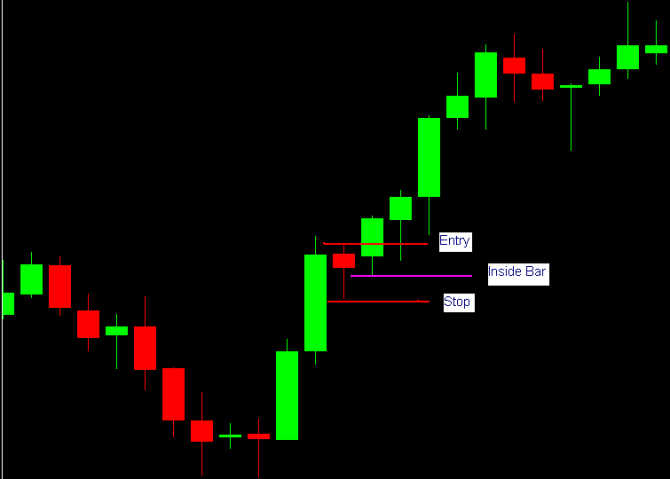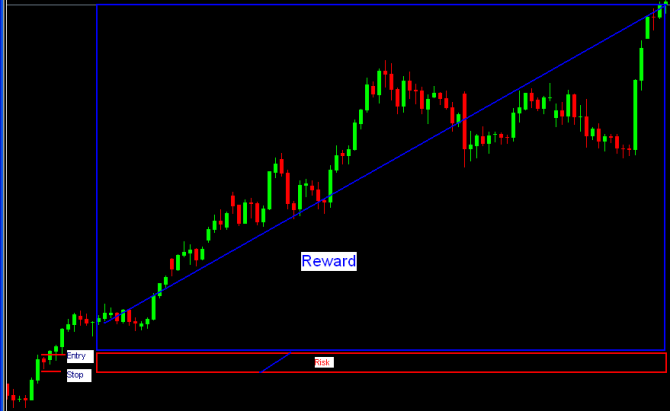In the previous instalment of our guide to Inside Bar Breakout Strategy, we showed you how to recognise the various types of inside bar candlestick formations, and what they represent. Today, we’ll be taking a look at some techniques for discerning reliable inside bar patterns, and give you some guidelines for trading them.
Finding Reliable Inside Bars
Because an inside bar can easily mislead, it’s important to be vigilant about discerning between reliable and unreliable inside bars. To this end, there are several criteria that you should observe when evaluating these patterns, namely the time frame, trend, and liquidity.
Time frame: There are several reasons why you should only trade inside bars based on a daily time frame. Most importantly, daily inside bars are more reliable than hourly or weekly ones, and the frequency of their formation is optimal for detecting the trends that they may be heralding. They also help to discipline your trading so that you don’t make too many trades in a short space of time, and this time frame requires less in the way of monitoring and constant attention.
Trend: Although inside bars can often signal a reversal, trading reversals tends to be a lot riskier than trading with the trend. Trading in the direction of the trend minimises risk and magnifies gains, so if the major daily trend is long, you should only trade inside bars on the long side and steer clear of opening short positions. Remember, in the forex market, the trend is merely an expression of what the major institutional investors, who have the biggest influence on price, are thinking. Therefore, you should only trade inside bars in the direction of the prevailing trend.
Liquidity: As we touched on briefly in the last instalment, the inside bars that are formed during periods of low liquidity are the least reliable of all. Rather than signalling a process of accumulation and distribution, these inside bars merely indicate that there is not much trading activity occurring. The drop in volume that can occur during US bank holidays, for example, or any other days when the major market participants might not be trading, causes the range to shrink and the chart to start printing inside bars. These are not reliable indicators of future price movement, and should not be traded under any circumstances.
Trading the Inside Bars
It’s important when trading any strategy to know the points at which you are going to get into the trade, and the point at which you should exit the trade if it does not work out as planned. It is also important to have a good idea of the risk/reward ratio of the trade in question.
The best place to enter a trade of this type is on the breakout of an inside bar, in the direction of the trend. So, if the overall trend is upwards, you would enter a long position with the breakout on the upper side.
Of course, many breakouts turn out to be false, but there are ways to minimise your risk of being caught out in this way. Crucially, you need to be aware of the momentum of the move, as most breakouts that lack momentum turn out to be false breakouts. What we are looking for is a strong, steep move in the direction of the breakout. To get a clearer picture of the momentum, scale down to smaller timeframes such as 4 hour, 2 hour, and 1 hour charts.

Source: Forexcrunch
When placing stops on this type of trade, it is important to put them in the right places, and these are usually on either side of the inside bar depending on the type of position you are taking. So, if you are going long, you should place the stops just below the bottom of the inside bar. Conversely, when going short, you should place them just above the top of the inside bar. This makes it very easy to choose where to put the stops.

Source: Forexcrunch
The basic objective of any trader is to reduce the risk and magnify the gains to the maximum possible extent. When traded properly, the risk/reward ratio for this strategy tends to range between 1:5 and 1:10, which should theoretically make it possible to wipe out 5 to 10 consecutive losses with just one successful trade.
In the third and final instalment of our series on Inside Bar Breakout strategy for FX traders, we shall be looking at what multiple inside bars signify, and also show you how to understand and overcome breakout traps.
Previous articles in this series:
Trading Strategy: Inside Bar Breakouts Part 1
Tradersdna is a leading digital and social media platform for traders and investors. Tradersdna offers premiere resources for trading and investing education, digital resources for personal finance, market analysis and free trading guides. More about TradersDNA Features: What Does It Take to Become an Aggressive Trader? | Everything You Need to Know About White Label Trading Software | Advantages of Automated Forex Trading

































